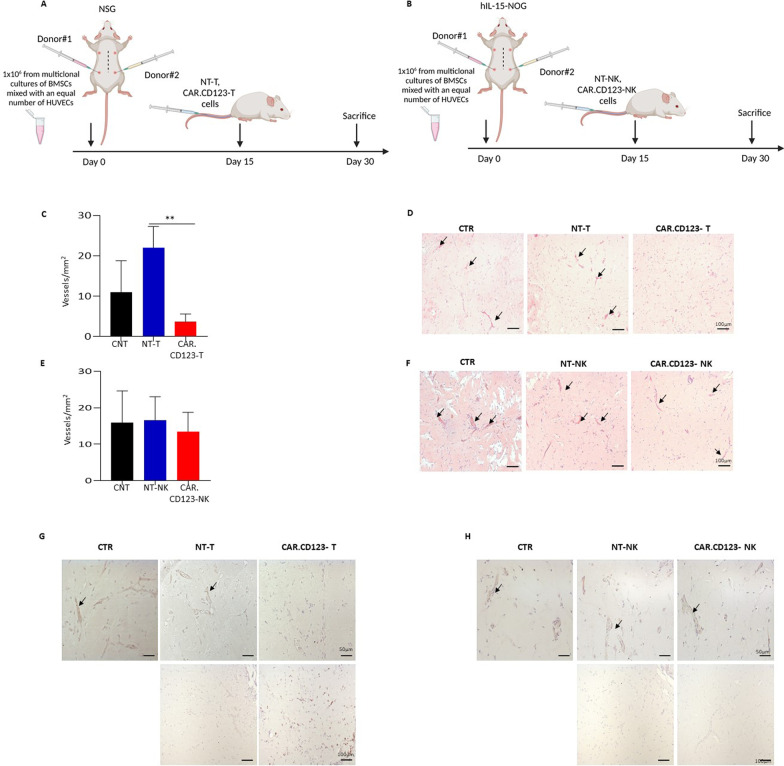Fig. 8.
CAR.CD123-NK cells do not target the human endothelial, preserving the vessels integrity in the murine model. A–B Schematic representation of angiogenesis assay in NSG mice engrafted at Day 15 with NT-T or CAR.CD123-T and hIL-15NOG mice engrafted at Day 15 with NT-NK or CAR.CD123-NK cells. Mice were killed at 30 days post-Matrigel injection. C The number of vessels per mm2 was reduced in CAR.CD123-T cells-bearing NSG mice (red column) as compared to control (mice that were not infused with effector cells, black column) or to mice receiving NT-T cells (blue column). Data are shown as average ± SD; **p < 0,001. D Haematoxylin and eosin-stained sections of Matrigel plugs showing the formation of an extensive network of capillary-like blood vessels in control and in NT-T infused mice, in contrast to CAR.CD123-T infused mice. E hIL-15NOG mice carrying Matrigel plugs were injected with NK-NT (blue column) or CAR.CD123-NK cells (red column), and no differences were observed in the vessels number compared to the control condition (CNT, black column). Data are shown as average of ± SD. F Haematoxylin and eosin-stained sections of Matrigel plugs derived from hIL15NOG mice infused with CAR.CD123-NK show no differences in the newly formed capillary network. G Representative images of immunohistochemical staining for CD123 (top panels) and CD45 (bottom panels) in samples derived from mice infused with NT-T or CAR.CD123-T cells. H Representative images of immunohistochemical staining for CD123 (top panels) and CD45 (bottom panels) in samples derived from mice infused with NT-NK or CAR.CD123-NK cells

